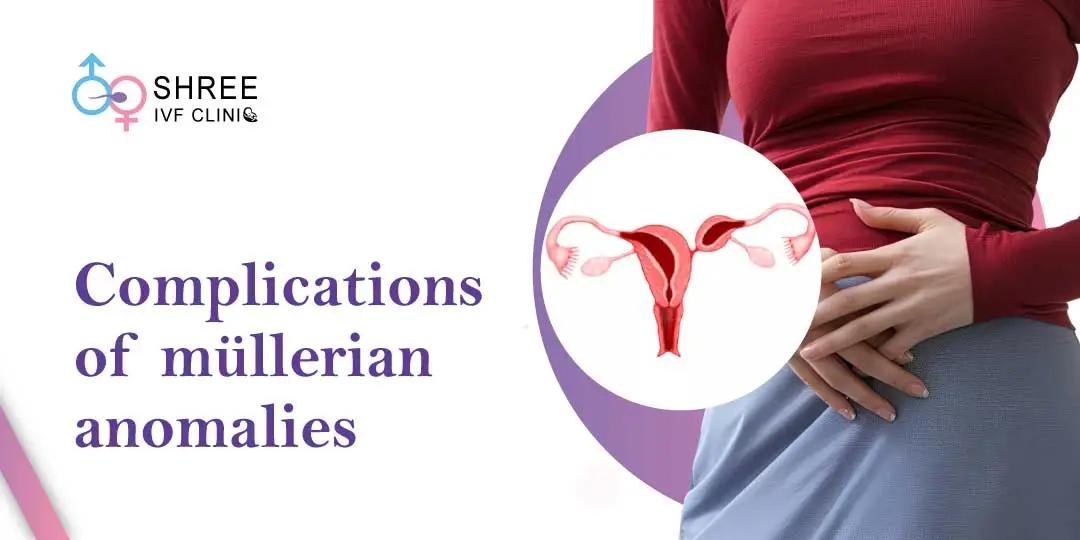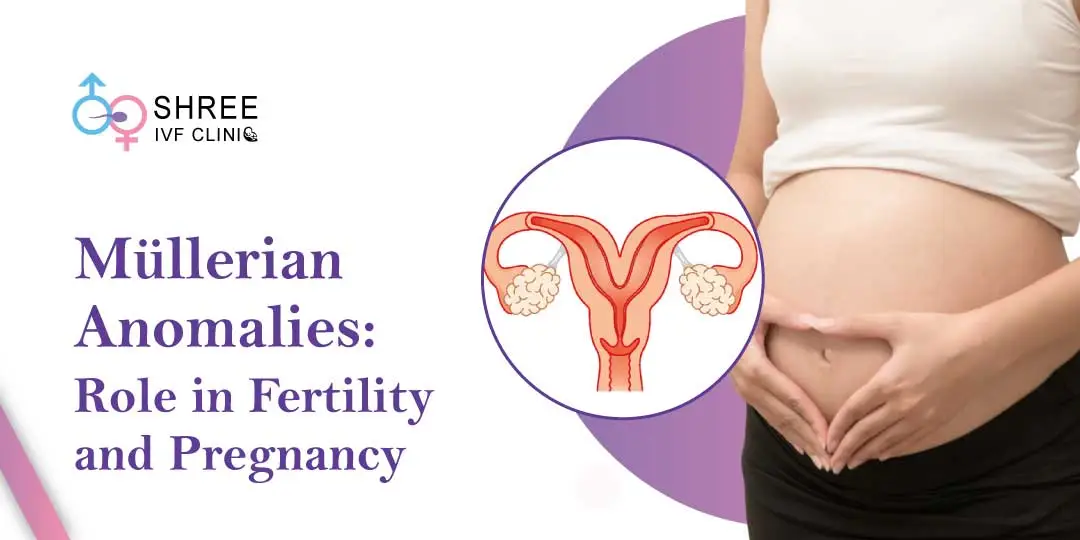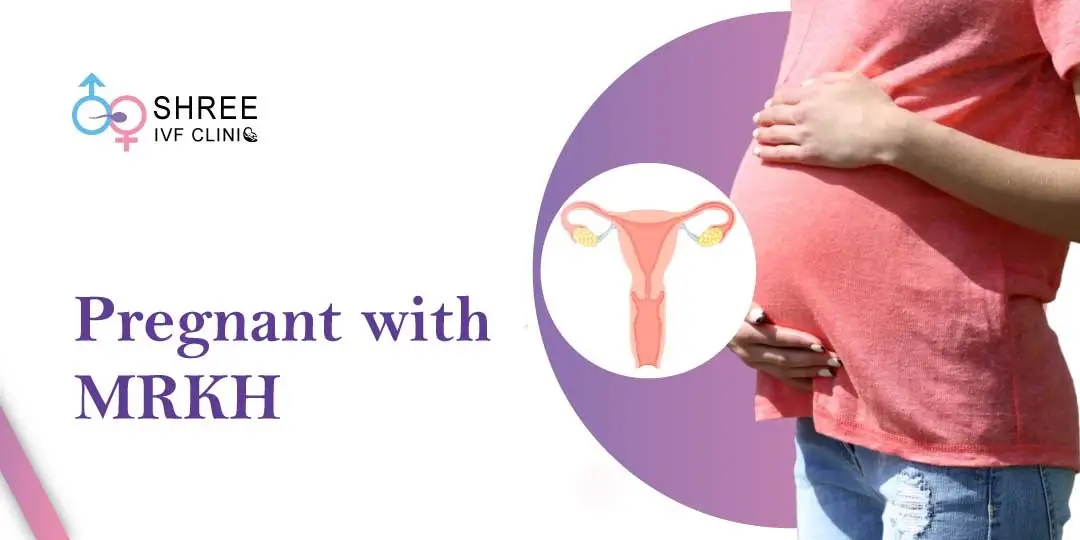What is the Difference Between Agenesis and Atresia?
UPDATED ON 13TH MAR. 2024
In the realm of gynaecology, the terms ‘agenesis’ and ‘atresia’ are used to describe specific developmental anomalies that can significantly affect female reproductive health. Agenesis refers to the absence of an organ due to its failure to develop during embryonic growth, while atresia describes the absence or closure of a body passage that is normally open.
Understanding the distinctions between these two conditions is crucial for accurate diagnosis, treatment, and management of affected patients. This article sheds light on these medical concepts, elucidating their implications for female reproductive health.

AUTHOR
Dr Jay Mehta
Scientific Director & IVF Specialist with 10+ years of experience
CONDITION
GET IN TOUCH ON
Agenesis: Absence of an Organ
Agenesis is a congenital condition that occurs during early fetal development when an organ fails to form properly. This can result in either partial or complete absence of the affected organ, and it can occur in various parts of the body. In terms of gynecology, agenesis most commonly affects the reproductive organs such as the ovaries, uterus, and vagina.
The absence of an organ due to agenesis can have significant impacts on a person’s reproductive health. For example, women born with vaginal agenesis (also known as Mayer-Rokitansky-Küster-Hauser syndrome) may not experience menstruation or be able to carry a pregnancy. Similarly, ovarian agenesis can result in infertility and other hormonal imbalances.
Types of Agenesis in Females
Among the different types of agenesis affecting females, we can broadly categorise them into two distinct groups based on the reproductive organ impacted.
- Uterine Agenesis
This type of agenesis is also known as Müllerian agenesis. In this condition, a female’s uterus may be completely absent, or severely underdeveloped, leading to complications such as primary amenorrhea, where the onset of menstruation does not occur at puberty.
Uterine agenesis is often associated with other congenital anomalies of the urinary system due to the shared embryonic origin.
- Vaginal Agenesis
Vaginal agenesis, or Mayer-Rokitansky-Küster-Hauser (MRKH) syndrome, is characterized by the congenital absence of the vagina, which may occur either in isolation or alongside uterine agenesis.
Females with this condition often discover the issue at puberty when they fail to menstruate despite having normal ovarian function and secondary sexual characteristics.
- Ovarian Agenesis
Ovarian agenesis is exceedingly rare and typically involves the absence of one ovary (unilateral ovarian agenesis).
When both ovaries are absent (bilateral ovarian agenesis), it leads to a lack of natural sex hormones, resulting in delayed or absent sexual development unless adequately treated with hormone replacement therapy.
- Fallopian Tube Agenesis
Fallopian tube agenesis can occur on one or both sides (unilateral or bilateral). This anomaly may not be readily apparent until investigations for infertility or chronic pelvic pain are undertaken.
Bilateral agenesis results in natural conception being virtually impossible, as the path for egg movement from the ovaries to the uterus is obstructed.
Each type of agenesis poses unique challenges to affected women, particularly concerning fertility, and requires individualized management strategies tailored to their specific diagnostic profile and reproductive goals.
Atresia: Closure of a Body Passage
Atresia, on the other hand, refers to the closure or absence of a body passage that is normally open. This condition is also present from birth and can affect various parts of the body. In gynecology, atresia most commonly affects the reproductive organs, such as the fallopian tubes and cervix.
Atresia can have a significant impact on fertility and overall reproductive health. For instance, atresia of the fallopian tubes can prevent an egg from traveling to the uterus, resulting in infertility.
It can also increase the risk of ectopic pregnancies, where a fertilized egg implants outside the uterus. Additionally, atresia of the cervix can lead to menstrual complications and difficulty with childbirth.
Types of Astresia in Females
Atresia can manifest in several forms, particularly impacting female reproductive health.
- Bilateral fallopian tube atresia is a condition where both fallopian tubes are blocked, preventing eggs from reaching the uterus for fertilization.
- Cervical atresia refers to the closure or underdevelopment of the cervix, which can lead to amenorrhea and potentially hematometra, where menstrual blood accumulates in the uterus.
- Vaginal atresia is a rare congenital deformity where the vagina is closed or absent, often resulting in menstrual flow obstruction.
Each type of atresia demands a unique clinical approach, ranging from minimally invasive surgical procedures to more complex reconstructive surgeries, depending on the severity and anatomical considerations.
What is the highlighting difference between atresia and agenesis?
Atresia and agenesis, while both can be congenital conditions, are distinct in their characteristics and implications for reproductive health. Here’s a comparison in table format:
| Atresia | Agenesis |
|---|---|
| Is the pathological closure of a body orifice or the absence of a normal opening. | Is the complete absence or undeveloped organ or part of an organ. |
| In atresia, the organ in question typically develops but remains closed or not properly opened. | In agenesis, the organ or part does not develop at all. |
| Can sometimes be corrected or improved through surgical procedures. | Surgical correction is more complex as it may require creating or reconstructing the missing part or organ. |
| The focus in treatment is to restore the normal patency or function of the existing structure. | Treatment may involve prosthetics, reconstructive surgery, or therapy to adapt to the absence of the organ. |
| May lead to complications such as obstructions or build-up in the affected area, like haematometra in cervical atresia. | May have wider systemic implications depending on the function of the missing organ or part. For example, renal agenesis affects waste filtration and blood pressure regulation. |

4,790+
379K+
How to know if you have any of Atresia or Agenesis?
There are a few symptoms that may indicate the presence of atresia or agenesis, depending on the affected area. Some common signs include:
- Difficulty or pain when trying to urinate (urethral atresia)
- Lack of menstrual periods (cervical atresia)
- Absence of certain bones or muscles (musculoskeletal agenesis)
- Delayed or absent puberty (genital agenesis)
- Difficulty breathing or swallowing (respiratory atresia)
If you experience any of these symptoms, it is important to consult a gynaecologist for proper diagnosis and treatment. They may conduct imaging tests, genetic testing, or other diagnostic procedures to determine the exact cause of the symptoms.
Treatment Options for Atresia and Agenesis
The treatment for atresia or agenesis depends on the affected area, the severity of the condition, and individual factors. In some cases, no treatment may be required if the missing organ or part does not significantly impact daily functioning.
However, in cases where treatment is necessary, it typically involves surgical correction or prosthetic devices to replace the missing part.
For example, in cases of urethral atresia, surgery may be performed to create an alternate opening for urine to pass through. In genital agenesis, reconstructive surgery may be done to create external genitalia.
In addition to medical treatment, individuals with atresia or agenesis may require ongoing support and counseling. This can help them cope with the physical and emotional challenges that may arise from living with these conditions.
Connecting with support groups or joining online communities can also provide a sense of community and understanding for individuals dealing with similar experiences.
Living with Atresia or Agenesis
Living with atresia or agenesis can present unique challenges, but it is important to remember that you are not alone. With proper medical care and support, individuals with these conditions can lead fulfilling lives.
If you or a loved one has been diagnosed with atresia or agenesis, it is important to educate yourself about the condition and available treatment options. This can help you make informed decisions regarding your healthcare and communicate effectively with your doctors.
AUTHOR
Dr Jay Mehta
Scientific Director & IVF Specialist with 10+ years of experience
CONDITION
CALL US 24/7 FOR ANY HELP
GET IN TOUCH ON
Share Article on
Recommended Reading
Are Mullerian Anomalies a Problem For Infertility?
Uncover how Müllerian anomalies affect fertility in our in-depth blog. From diagnosis to treatment, learn actionable insights for informed decisions on your reproductive health journey.
Müllerian Duct Anomalies: Role in Fertility and Pregnancy
Explore Müllerian Duct Anomalies’ impact on fertility and pregnancy. Discover types, diagnostics, treatments, and antenatal care with expert guidance.
Can You Get Pregnant with MRKH?
Curious about pregnancy with MRKH syndrome? Discover fertility options and treatment insights in our comprehensive blog. Learn about the impact of MRKH on conception, diagnostic methods, and the latest reproductive technologies.




